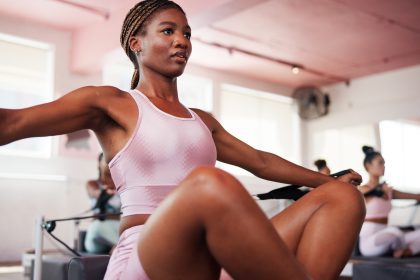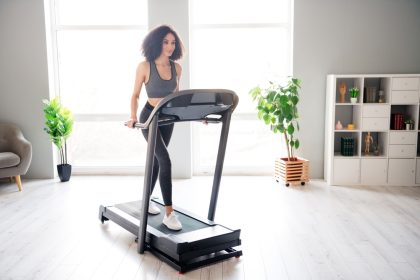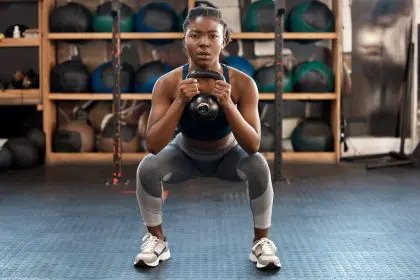Balance training sounds like something only gymnasts and yoga instructors need to worry about, but it’s actually the most underrated predictor of how gracefully you’ll age and how long you’ll live independently. While everyone obsesses over cardio and strength training, the ability to stand on one foot for 10 seconds without wobbling is a better indicator of longevity than your bench press max or marathon time.
Your balance system is the canary in the coal mine of aging, deteriorating silently while you focus on more obvious fitness metrics like muscle mass and cardiovascular endurance. By the time you notice balance problems, you’ve already lost years of neurological function that could have been preserved through simple exercises that take minutes per day.
The research is clear and sobering: people who can’t balance on one foot for 10 seconds have an 84% higher risk of death within the next decade. This isn’t about vanity or athletic performance—this is about maintaining the basic human function that keeps you upright, mobile, and independent as you age.
Your brain is quietly losing its grip on your body
Balance isn’t just a physical skill—it’s a complex neurological process that requires your brain to integrate information from your eyes, inner ears, and proprioceptive sensors throughout your body. When this system starts declining, it signals broader neurological deterioration that affects everything from cognitive function to life expectancy.
The vestibular system in your inner ear acts as your body’s internal gyroscope, but it begins deteriorating in your thirties and loses about 40% of its function by age 70. This decline happens so gradually that most people don’t notice until they’re already experiencing significant balance problems.
Proprioception, your body’s ability to sense where it is in space, depends on nerve receptors that become less sensitive with age and disuse. When you can’t feel where your feet are or how your joints are positioned, your brain can’t make the micro-adjustments needed to keep you upright.
Visual processing speed decreases with age, making it harder for your brain to quickly process environmental information needed for balance reactions. This is why balance problems often worsen in dim lighting or unfamiliar environments where visual cues are reduced.
The neural pathways that coordinate balance responses become less efficient over time, creating delays between sensing instability and correcting it. These millisecond delays can mean the difference between catching yourself and hitting the ground.
Falls are the gateway to losing everything
One serious fall can transform an independent, active person into someone who needs assistance with daily activities and lives in fear of moving freely. The psychological impact of falling often creates a cycle of inactivity that accelerates physical decline and increases the risk of future falls.
Hip fractures from falls carry a mortality rate of 20-30% within the first year, not because the fracture itself is fatal, but because the immobility and complications that follow often trigger a cascade of health problems that prove insurmountable for older adults.
The fear of falling that develops after balance problems become noticeable causes many people to restrict their activities, leading to muscle weakness, bone loss, and further balance deterioration. This creates a vicious cycle where avoiding falls actually increases fall risk.
Emergency room visits from falls cost the healthcare system over $50 billion annually, but the personal cost in lost independence and quality of life is immeasurable. Many people never fully recover their confidence or mobility after a serious fall.
The ripple effects of falls extend beyond the individual to affect family members who become caregivers and healthcare systems that struggle to manage the increasing numbers of fall-related injuries in aging populations.
Balance training rewires your brain for stability
Unlike other forms of exercise that primarily benefit muscles and cardiovascular systems, balance training creates neuroplasticity that actually rewires your brain to process stability information more effectively. This neurological improvement can reverse years of age-related decline in balance function.
Challenging your balance system through specific exercises forces your brain to create new neural pathways and strengthen existing connections between different sensory systems. This cross-training of your nervous system improves overall neurological function, not just balance.
The improvements from balance training happen remarkably quickly, with noticeable improvements often occurring within 2-4 weeks of consistent practice. This rapid response reflects how responsive the nervous system is to targeted stimulation when provided with appropriate challenges.
Balance exercises that remove visual input, like closing your eyes while standing on one foot, force your brain to rely more heavily on proprioceptive and vestibular information. This sensory cross-training improves the redundancy in your balance system.
Dynamic balance challenges that involve movement, direction changes, and unstable surfaces create complex neurological demands that translate to improved stability in real-world situations where balance is threatened unexpectedly.
Your core is the command center of stability
True core strength isn’t about six-pack abs—it’s about the deep stabilizing muscles that work automatically to maintain your center of gravity over your base of support. These muscles often weaken from disuse long before you notice any visible changes in your midsection.
The diaphragm, pelvic floor, deep abdominal muscles, and small muscles along your spine work together as an integrated system to provide the foundation for all movement and balance reactions. When this system is weak or uncoordinated, even simple movements become unstable.
Breathing patterns affect core stability in ways that most people never consider. Shallow, chest-based breathing prevents proper diaphragm function and reduces core stability, while deep, diaphragmatic breathing enhances the natural stabilization system.
Modern sedentary lifestyles create core weakness patterns that make balance problems inevitable. Sitting for hours daily weakens the deep stabilizers while creating compensations that further compromise balance function.
Balance training automatically engages and strengthens these deep core muscles in functional patterns that can’t be replicated through traditional abdominal exercises. This functional core strengthening provides stability benefits that transfer to all daily activities.
Simple exercises create profound changes
Single-leg standing is the foundation of balance training and can be progressed from holding onto a wall to closing your eyes to standing on unstable surfaces. Just 30 seconds of single-leg standing per leg daily can create measurable improvements in balance function.
Heel-to-toe walking, where you walk in a straight line placing one foot directly in front of the other, challenges your dynamic balance and improves the coordination needed for normal walking. This exercise can be done anywhere and requires no equipment.
Standing on one foot while performing simple tasks like brushing your teeth or washing dishes integrates balance training into daily routines without requiring additional time commitments. This functional approach makes balance training sustainable and practical.
Tai chi and yoga provide excellent balance training through flowing movements that challenge stability while improving strength, flexibility, and body awareness. These practices offer comprehensive benefits that extend beyond just balance improvement.
Unstable surface training using balance boards, foam pads, or even standing on a pillow provides advanced challenges that force your balance system to work harder and adapt more quickly than stable surface exercises.
The earlier you start, the more dramatic the benefits
Balance training provides benefits at any age, but starting earlier allows you to build greater reserves of neurological function that protect against age-related decline. Think of it as making deposits in a neurological bank account that you’ll draw from later in life.
People in their forties and fifties who begin balance training often experience improvements not just in stability, but in athletic performance, confidence, and overall body awareness that enhance quality of life immediately rather than just providing future protection.
The cognitive benefits of balance training include improved attention, processing speed, and executive function. The neurological challenges of maintaining balance provide brain training that extends beyond just physical stability.
Balance training is one of the few forms of exercise that becomes more important rather than less important as you age. While you might eventually need to modify strength training or cardiovascular exercise, balance training remains crucial throughout the entire lifespan.
The investment in balance training pays dividends not just in fall prevention, but in maintaining the confidence and independence that allow you to stay active and engaged in life as you age. The difference between someone who can move confidently and someone who’s afraid of falling affects every aspect of daily life.
Starting a balance training routine today, regardless of your current age or fitness level, represents one of the most powerful interventions you can make for successful aging. The time investment is minimal, the equipment requirements are nearly zero, and the potential benefits include literally saving your life through fall prevention.
The most tragic aspect of balance-related falls and injuries is that they’re largely preventable through simple exercises that take just minutes per day. Unlike many aspects of aging that are beyond our control, balance function can be maintained and even improved through targeted training that anyone can perform.















